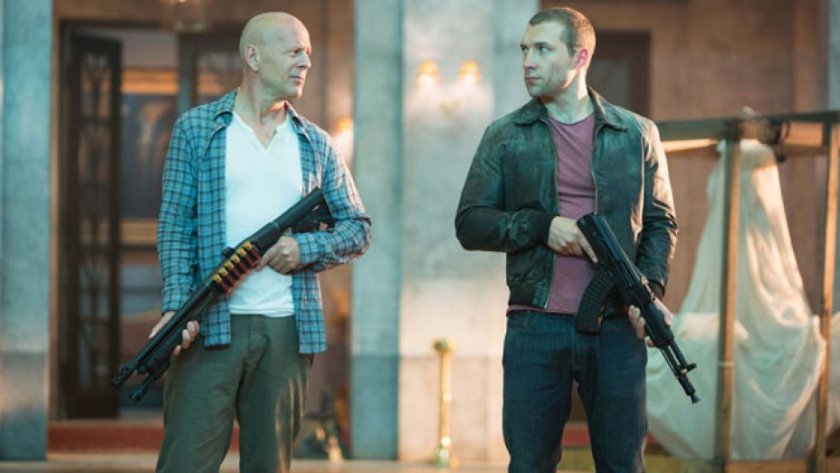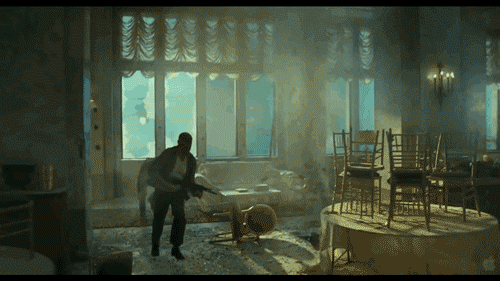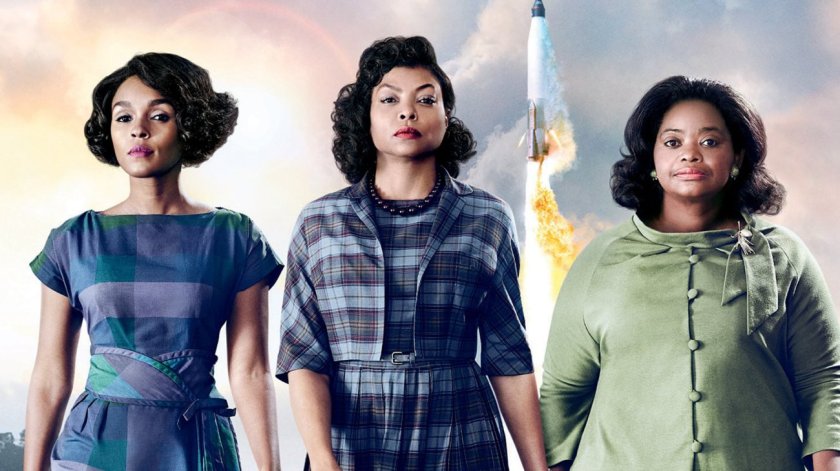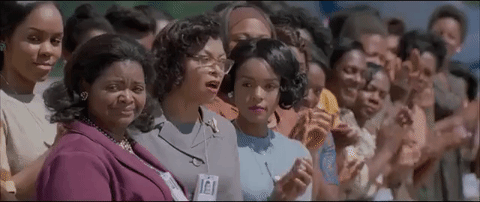
“A GOOD DAY TO DIE HARD” (2013) Review
Five-and-a-half years following the successful release of the fourth movie in the DIE HARD movie franchise – 2007’s “LIVE FREE OR DIE HARD”, 20th Century Fox Studios release a fifth movie about the adventures of New York Police detective John McClane called “A GOOD DAY TO DIE HARD”.
A high-ranking, yet corrupt official in Moscow, Russia named Viktor Chagarin plans on incriminating political prisoner/government whistleblower and former billionaire Yuri Komarov without a fair trial when Komarov refuses to hand over a secret file believed to have convicting evidence against Chagarin. A young man assassinates a colleague of Chagarin’s and agrees to testify against Komarov for a shorter sentence. He turns out to be John “Jack” McClane Jr., Detective McClane’s estranged only son. The NYPD police officer, who has not been in touch with his son for years, learns of Jack’s situation and travels to Russia to help.
But when John arrives and approaches the courthouse that holds Jack and Komarov on trial, an explosion orchestrated by Chagarin and his henchmen disrupts the courthouse, and Jack breaks free with Komarov. After spotting Jack, John confronts him, but their dispute is cut short when Chagarin’s henchmen, led by main enforcer Alik, chase them throughout the streets of Moscow. John learns that Jack is a CIA agent and has been on a three-year mission to rescue Komarov from Chagarin’s clutches and retrieve a file that can link Chagarin and Komarov to the Chernobyl nuclear disaster. The file will enable the U.S. government to bring down Chagarin, who has proven to be an obstacle to U.S.-Russian relations. But the McClane men not only learn to heal long-standing family rifts, but also discover there is more to this mission than evidence against Chagarin.
“A GOOD DAY TO DIE HARD” received negative reviews from movie critics. In fact, their response to the movie strongly reminded me of the negative press that the James Bond movie, “QUANTUM OF SOLACE” had received in 2008. In a way, I could see why. Both movies share two negative traits that prevented them from becoming even better films. “A GOOD DAY TO DIE HARD”, like the Bond film, suffered from what I liked to call the “Paul Greengrass film editing style”. I realize that this editing style has been popular with recent filmmakers who use it to trim a movie’s running time. But I can do without it. I disliked it in the second, third and fifth JASON BOURNE movies. I disliked it in “QUANTUM OF SOLACE”. And I also disliked it in “A GOOD DAY TO DIE HARD”. Director John Moore and editor Dan Zimmerman used it with strong effect during the Moscow car chase, making the latter one of the most confusing car chases since the one featured in 2007’s “THE BOURNE ULTIMATUM”.
Moore and Zimmerman’s use of this fast speed editing style also enabled them to give “A GOOD DAY TO DIE HARD” the shortest running time in the franchise’s fifteen year history . . . one of 97 minutes. The idea of a DIE HARD movie running slightly over 90 minutes makes me shake my head in disbelief. Also, the plot for this latest film, penned by Skip Woods, is too complicated and quite frankly, too good to be wasted on a 90-something minutes running time. If “A GOOD DAY TO DIE HARD” had possessed a longer running time, Woods story could have been told with greater detail. For instance, the movie could have revealed how John learned of Jack’s arrest with greater detail. And the situation regarding Chagarin, Komarov and Jack could have been told with greater detail with a longer running time. Also, Cole Hauser could have enjoyed more screen time as Jack’s CIA partner, Mike Collins. Instead, Hauser was barely on screen for five minutes tops.
Before one begins to think I share the critics’ dislike of “A GOOD DAY TO DIE”, you will be mistaken. Because I do not share their opinion. Despite the Paul Greengrass editing style and the shorter running time, I still enjoyed the movie very much . . . in fact, more than I thought possible. As I had stated earlier, Skip Woods penned a very strong story for the movie. Yes, it featured the usual over-the-top action that has been a hallmark of the franchise for years. One of my favorite scenes proved to be John, Jack and Komarov’s escape from the CIA safe house in Moscow. It not only gave Bruce Willis (or his stunt man) another chance to prove how great he can be as on-screen badass, it gave Jai Courtney, who portrayed Jack McClane, a chance to show that his character is a badass, as well. In fact, another scene provided more great moments for both Willis and Courtney – namely the McClane men’s escape from death after they and Komarov were captured by Alix.
One of the best aspects of Woods’ screenplay proved to be the complicated story surrounding the strained relationship between Chagarin and Komarov. This storyline provided audiences an interesting peek into Russian politics – if it is somewhat accurate. I suspect that it is not completely accurate, but this is a work of fiction we are talking about, not a documentary. More importantly, Woods’ story added the Chernobyl disaster as a catalyst to the former colleagues’ estrangement . . . enabling audiences a chilling peek at the infamous Chernobyl site in the Ukraine, during the movie’s final action scene. This sequence also provided a plot twist that brought back a memories of the 1990 film, “DIE HARD 2”. The best aspect of “A GOOD DAY TO DIE HARD” is that the movie allowed a more satisfying portrayal of the relationship between John and Jack than “LIVE FREE AND DIE HARD” did for John and Lucy, five-and-a-half years earlier.
Speaking of the relationship between the two McClane men, it would not have worked without the chemistry between Bruce Willis and Jai Courtney. I understand that the movie’s casting director considered a good number of actors – including Liam Hemsworth and James Badge Dale – before Australian actor Jai Courtney was chosen. Willis was in top form, as usual. I found Willis very effective in portraying McClane’s desire to reconcile with his son in conflict with the NYPD cop’s penchant for butting into situations where he is not wanted. And he formed a top-notch chemistry with Courtney. The latter did an excellent job in portraying Jack’s initial resentment toward John, his growing regard for the latter and intense fixation on his mission. German actor Sebastian Koch (whom I have seen in 2011’s “UNKNOWN” and 2015’s “BRIDGE OF SPIES”. gave a subtle, yet complex portrayal of Yuri Komarov, the former billionaire and criminal who found a conscious and exposed his former partner. Sergei Kolesnikov gave a solid performance as the corrupt politician Viktor Chagarin. But I found Yuliya Snigir very impressive as Komarov’s daughter Irina, who proved to be more than meets the eye. I wish I could say the same about Radivoje Bukvić, who portrayed Chagarin’s main henchman. But I found his performance a little over-the-top. It was nice to see Mary Elizabeth Winstead reprise her portrayal of Lucy McClane, and she proved to be as spunky as ever. But Cole Hauser was really effective as Mike Collins, Jack’s CIA partner. He was subtle, brutal and slightly scary. And his performance made me wish he had more scenes.
I can understand the critics’ disappointment with the shorter running time and quick flash editing in “A GOOD DAY TO DIE HARD”. But despite these flaws, the movie still proved to be very entertaining, thanks to solid, yet slightly flawed direction by John Moore, an interesting story penned by Skip Woods and a first rate cast led by Bruce Willis and Jai Courtney.





